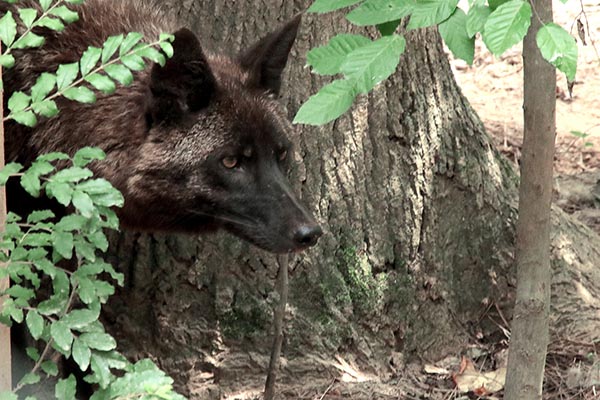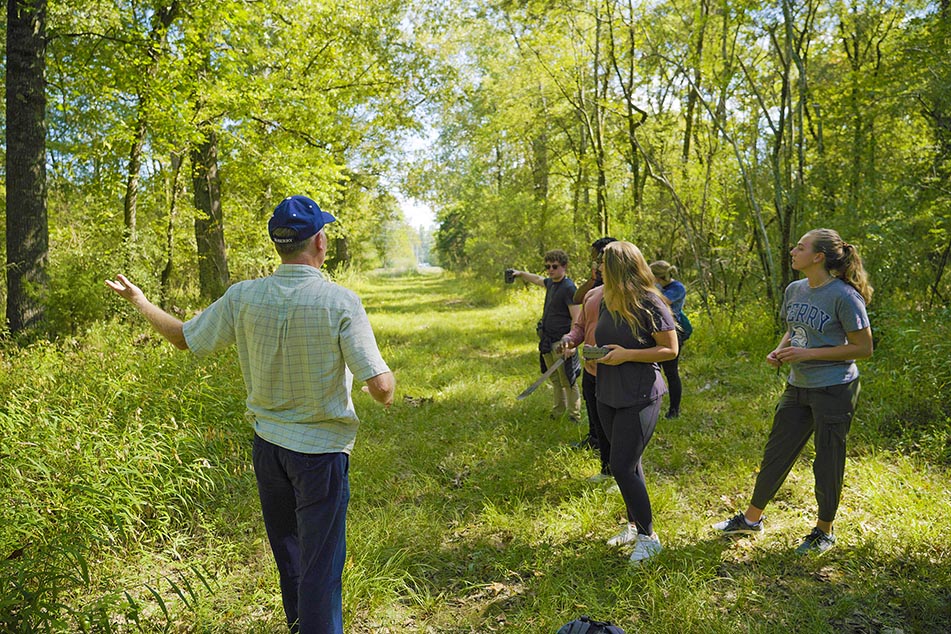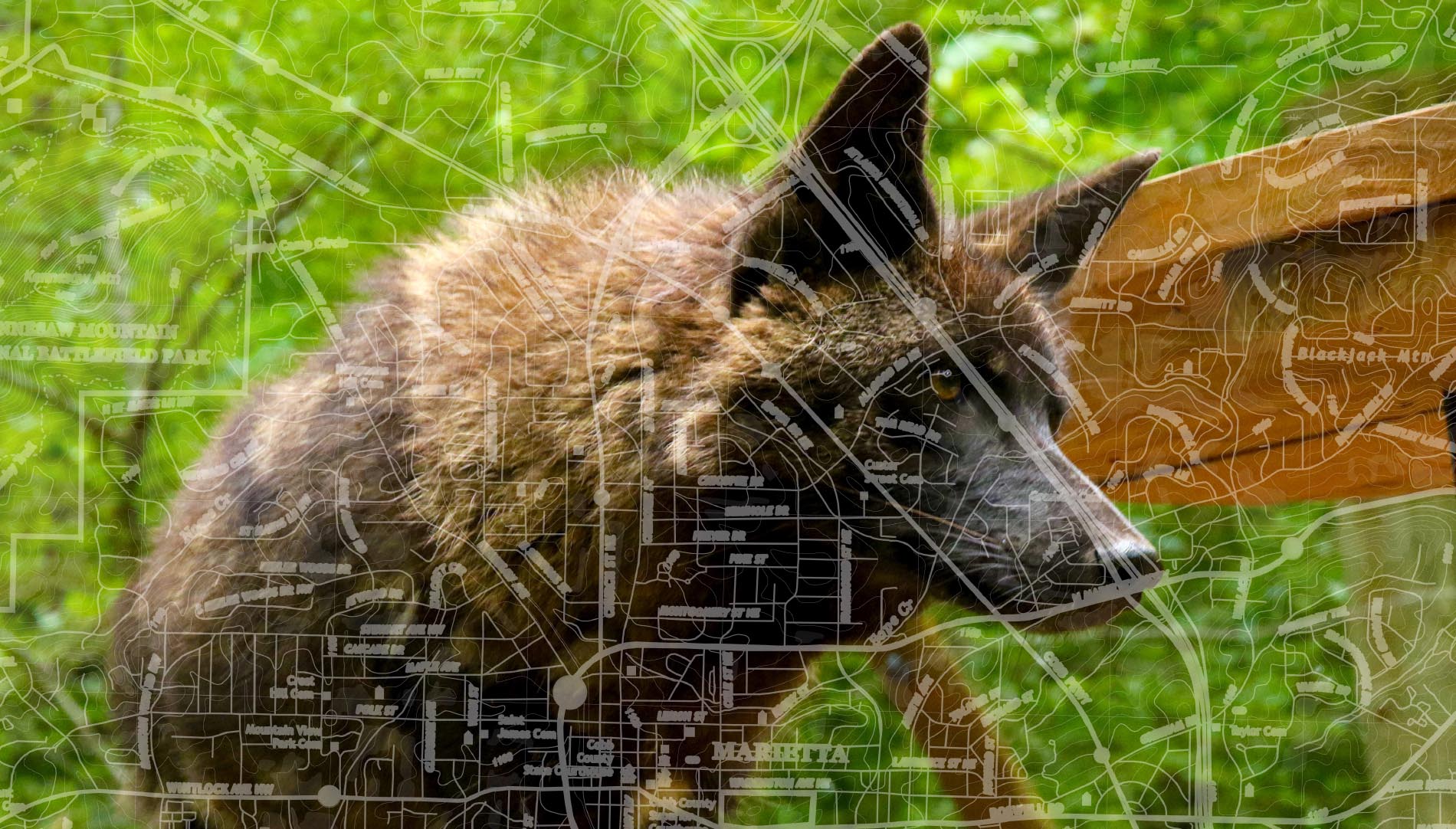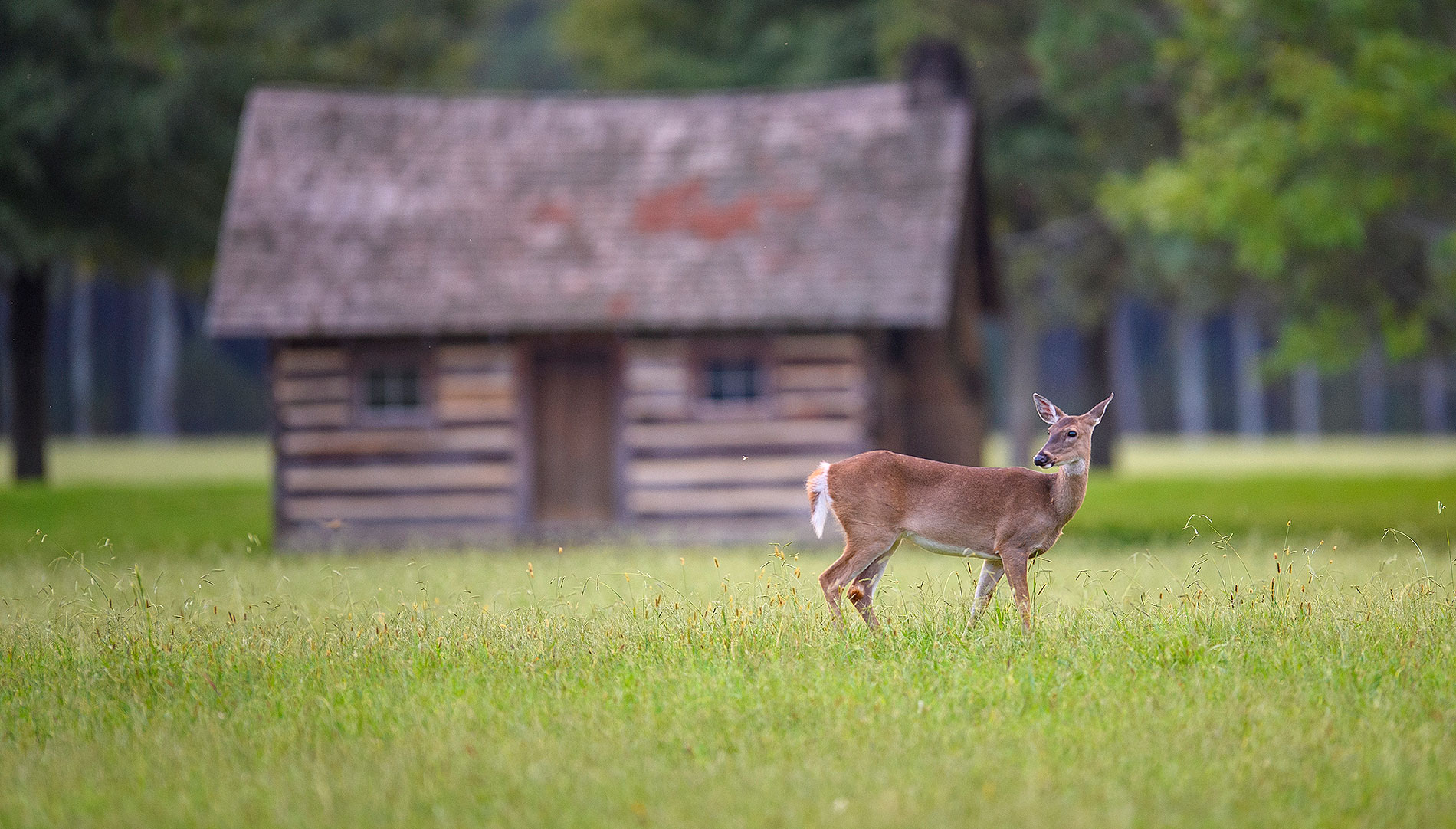By Karilon L. Rogers
Coyotes are everywhere. Even in a metropolis like Atlanta, they can be found in Piedmont Park, at the Carter Center, near Emory University, in Grant Park and around scores of other public places. In fact, the sly creatures most likely roam in a wooded area near you, regardless of your urban location. You don’t see them, you say? That’s because they’d rather not see you.
Mysterious, magnificent and mightily misunderstood, coyotes are an important part of our urban ecosystem that must be preserved, according to Berry Professor of Biology Dr. Chris Mowry, who, in 2014, launched the Atlanta Coyote Project with longtime friend and colleague Dr. Larry Wilson, now an adjunct professor of biology and environmental sciences at Emory University. The project is dedicated to studying coyotes and protecting their important role in the ecosystem through public information and education.
Seven years after its founding, the ACP has nearly 40 cameras installed across a 50-kilometer transect of metropolitan Atlanta in order to study coyotes in their natural environment. Most recently, cameras have been added on the famed East Lake Golf Course, where coyotes enjoy frolicking in sand traps at night. The ACP is active with the Urban Wildlife Information Network and has a robust website for citizens to report sightings.
Over the last two years, the ACP has received extensive media coverage in Georgia (and even some national and international attention) for its activities involving a black Cobb County coyote dubbed Carmine (above). Last spring, a half-hour Georgia Outdoors program on Georgia Public Broadcasting focused on efforts to track, trap and relocate the wily, but playful, coyote, as well as on what makes coyotes such amazing animals.
Carmine, the friendly coyote
It was the day after Christmas in 2019 when Mowry got the first call about Carmine. A friend in Smyrna living near what is now Truist Park, home of the Atlanta Braves, reported that neighbors had seen a black dog in their yards playing with their dogs. When she saw it, she felt certain it was a coyote. Long story short, it was Carmine, a rare black – or melanistic – coyote. Numerous sightings of the creature soon began to come in to the ACP website.
Across Smyrna and in nearby Vinings, Carmine jumped fences to play (nicely) with dogs, shyly followed people walking their dogs (not bothering them other than to make them mighty nervous), stole dog toys, slumbered under a trampoline, and relaxed in a dog kennel or two. Still, he was always wary of humans, wanting nothing to do with them.
Then he moved north and east, maneuvering the I-75/I-285 corridor by traversing culverts.
“It stunned me,” Mowry admitted of Carmine’s travels, which the ACP had been carefully tracking with much help from the public, “although I shouldn’t have been surprised.”

In East Cobb County, Carmine slept on a porch and almost entered a home through a doggie door. And he continued to seek amusement playing with dogs. Soon, he became a social media sensation with many loving him and others swearing to shoot him on sight. That is when Mowry and Wilson were forced to step in, despite their distaste for interfering in a wild creature’s life.
“We began to get very fearful for him,” Mowry explained. “We thought it would end badly. He was in a busy area, had threats against him and almost had been hit by cars.”
Mowry reached out to friends who were turning an old facility into the refurbished Yellow River Wildlife Sanctuary in Lilburn, Ga., to see if they would take another coyote as they already had one. The answer was yes. Then he approached the Georgia Department of Natural Resources for permission to trap Carmine and relocate him. Permission was granted. This was necessary because every state requires trapped coyotes – and other potential rabies-vector animals – to be killed, even though coyotes rarely carry the disease.
Next, Mowry partnered with longtime friend and humane wildlife trapper Brandon Sanders to set the trap. They almost got Carmine the first night.
“He grabbed a dog toy and ran away,” Mowry bemoaned, “and then it took us more than six weeks to get him.”
Once captured, Carmine’s wild-animal antics did not end. He was transported to the wildlife sanctuary where he was released into a new, fully-enclosed pen area, complete with roof. Within 20 seconds, he’d found a way out through a small hole no one had noticed.
“I nearly had heart failure,” Mowry remembered.
Luckily, the escapee found himself in another fenced area. He immediately began to climb straight up the fence but was quickly knocked down and eventually shooed back into his original area with the hole now plugged. After a period of quarantine and being neutered, he was introduced to the spayed female coyote at the facility, and they became immediate friends. Still, when ushered into a new, even-larger area designed just for the pair, Carmine once again took to the eight-foot fence and went straight up and over, not caring a whit for the electrified wire up top and leaving his new girlfriend in the lurch. He was quickly rounded up. Again.
“Coyotes have complex brains and are extremely intelligent,” Mowry stated. “And they have different personalities. Carmine is unique, but he is a wild animal that should never be approached. The first thing we teach is to appreciate and respect coyotes but to treat them as the wild animals they are.”
Carmine now has adapted to his environment and is content.
Mowry recently published research on Carmine in collaboration with Wilson and Bridgett vonHoldt from Princeton University’s Department of Ecology and Evolutionary Biology. Their work proved that Carmine is genetically a coyote, not mostly dog as some suspected, and that he does not carry any genetic mutations known to shape hypersociability in dogs – at least in the expected genetic location. Also, his rare black color is genetic, caused by a dominant gene.
What are coyotes REALLY like?
Native west of the Mississippi River, coyotes are relative newcomers to the Southeast, moving east in the 1950s only after the top-predator red wolf that lived in the area for thousands of years was wiped out by humans.
“I am most amazed by how adaptive and resilient coyotes are and how similar their behaviors are to humans,” Mowry stated. “They have similar family structures. They mate for life, and both parents raise the children. And they make their homes in both urban and rural settings.”
According to the ACP, coyotes are the main predators in the urban ecosystem, eating both small mammals like rats and rabbits and a wide variety of vegetation. So, if you don’t like rats, you should love coyotes, as noted by Sharon Collins in the Georgia Outdoors program on the ACP, because without them the rodent population would soar.
But people in urban areas wonder, “Won’t they eat my cat? My dog? Me?” According to Mowry, attacks on humans are extremely rare as coyotes are naturally shy creatures. They might well look at a roaming cat or dog as fair game, but not normally if the same cat or dog was closely accompanied by a human. All bets are off, though, if they feel the need to defend their young or territory or if they are to the point of starvation.
Mowry explained that coyotes establish a territory and try to keep it for life. In Georgia, they mate in late December and bear their young in mid-March. The pups stay in the den, which might be a hole in the ground, an abandoned pipe, a rock outcropping – anyplace that provides shelter – for four to six weeks.
The rest of the story
In the end, according to Mowry and the ACP, it is important for humans and coyotes to co-exist. By eating a little of this and a little of that, coyotes help ensure that no one species goes uncontrolled, thus promoting biodiversity and a healthy ecosystem. In other words, when you sing “this land is my land,” and discover a coyote is howling the same tune nearby, don’t be surprised or needlessly afraid. Follow the steps below to help keep them away from your property:
- Never feed coyotes
- Don’t leave pet food (any food) outside
- Don’t let pets roam; take in at night
- If pets must be kept outside, consider high fencing and motion- activated lights
- Keep tight lids on trash cans; make inaccessible if possible
- Clean grills after use; store if possible
- Keep squirrels, etc., from eating from and around bird feeders
- Properly dispose of any nearby dead animals (i.e. roadkill)
- Keep small livestock and poultry in enclosed or sheltered areas
- If you see a coyote nearby and feel uneasy, make loud noises and/or spray with a hose; make them feel unwelcome

Student research sparks student research
Routinely, four to five Berry students work with Dr. Chris Mowry on the Atlanta Coyote Project each year, getting real field-work experience as they coordinate with the Urban Wildlife Information Network, sort through the network of images captured throughout Atlanta and so on. Information from the project also is used in his classes, such as his behavioral ecology class.
Oddly, or perhaps not for a college with a mission to quickly involve students in research, Mowry’s interest in coyotes was sparked in 2001 by then first-year student Justin Edge (05C). Although previously focused almost entirely on African primate research, Mowry involved himself in on-campus coyote research with Edge. Together, they used what Mowry now calls “old-school technologies” to record coyote movement and howling.
Edge also took part in Berry’s Research Experience for Undergraduates program funded by the National Science Foundation, working with Mowry and students from other institutions on coyote research, and then took a post at the Yellowstone Ecological Research Center after graduation. Mowry soon began to collaborate with the Yellowstone organization and do more coyote research on campus. And so, it all began.
Now Mowry is working with still more students to study coyotes that recently swam to Dewees Island, S.C., near Charleston and are setting up camp there. Cameras – and a Berry student each summer – are watching in real-time a true natural experiment of coyotes colonizing the island.



